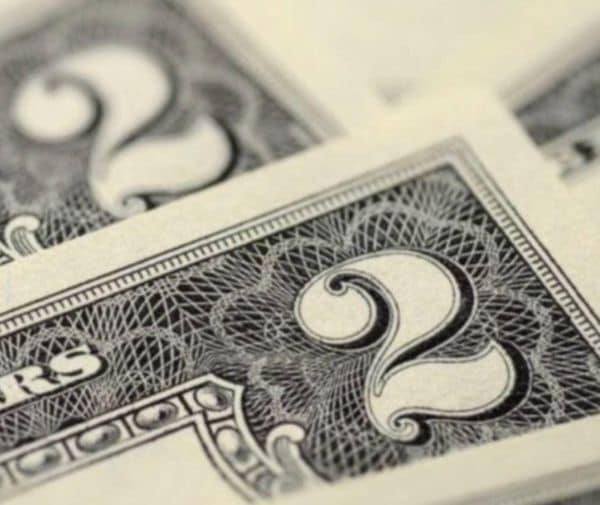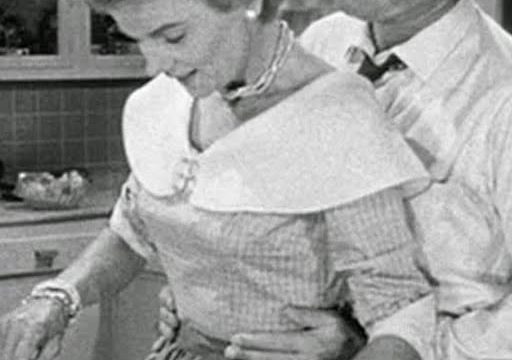Do you have a $2 bill tucked away somewhere in a drawer or wallet for good luck? It might be time to pull it out and take a closer look. You could be holding on to something far more valuable than you think.

The Surprising Value of $2 Bills
The $2 bill is often overlooked, and many people think it’s just another piece of pocket change. But the truth is, some $2 bills can be worth far more than their face value. In fact, collectors are willing to pay a surprising amount for specific types of these bills, particularly if they’re rare or in mint condition.
According to U.S. Currency Auctions, uncirculated $2 bills from 1890 could fetch at least $4,500, and uncirculated bills from various years between 1862 and 1917 are valued at a minimum of $1,000. These impressive figures depend on factors like the bill’s printing method and the location of the print. As the years go by, the rarity of these bills continues to increase, which makes them even more desirable for collectors.
It’s not just the very old $2 bills that can have significant value. Even newer $2 bills can be worth quite a bit under the right circumstances. For instance, a $2 bill printed in 2003 was sold at auction for $2,400 in 2022. The reason? It had a very low serial number for that particular print run, which made it highly attractive to collectors. This bill was sold through Heritage Auctions, which is known as the largest numismatic auction house in the world. Not only was it bought for a hefty price, but it was later resold for $4,000, demonstrating just how valuable these seemingly ordinary pieces of currency can become in the right hands.
Is the $2 Bill Rare?
Many people wonder whether the $2 bill is rare. Technically, the $2 bill isn’t as rare as some may think, but it is much less common than other denominations of U.S. currency. According to the Federal Reserve, there were about 1.5 billion $2 bills in circulation in 2022, which is a relatively small number compared to the total $54.1 billion of currency circulating in the U.S. that same year.
Because the $2 bill isn’t seen as often as other denominations, many people mistakenly believe it’s no longer being printed or that it’s incredibly rare. However, the Federal Reserve still prints $2 bills, and they are very much part of everyday currency in the United States. The rarity is more perceived than actual—it’s more a case of people simply not using them very often.
The Story Behind the $2 Bill
The $2 bill has an interesting history that’s full of ups and downs. The current version of the $2 bill features a portrait of Thomas Jefferson, the third President of the United States and the primary author of the Declaration of Independence. On the back of the bill, there is an illustration of the signing of the Declaration of Independence, an iconic moment in American history.
Despite its historical imagery, the $2 bill has had a rather troubled reputation. For years, it was the subject of superstition and was even associated with illegal activities like voter bribery. In the early 20th century, the U.S. Treasury made an effort to popularize the $2 bill, but it didn’t catch on. People were skeptical, and its link to bribery further tarnished its reputation. As a result, the government eventually stopped issuing new $2 bills for a period of time.
The $2 bill got a second chance when it was reintroduced in 1976, just as the United States was approaching its bicentennial. The goal was to celebrate the nation’s 200th birthday while also trying to reinvigorate the use of the $2 bill. While it was intended to be a common part of everyday currency, it never quite took off in the way the government hoped. However, the $2 bill remains in circulation today, and many people now consider it a fun and somewhat unusual piece of cash to have in their wallets.
The Appeal of the $2 Bill Today
While the $2 bill has had its challenges, it has also gained a kind of cult following. Many people love to hold on to $2 bills for their novelty value, and some even believe they bring good luck. Because they aren’t commonly seen, receiving a $2 bill can feel special, almost like finding a rare treasure.
Collectors are especially interested in certain $2 bills, particularly those with unique serial numbers or those from earlier print runs. A low serial number, an unusual pattern, or a star next to the serial number can make a $2 bill highly desirable. These small details can significantly increase the value of a bill, turning what might seem like an ordinary piece of currency into a sought-after collector’s item.
Should You Hold On to Your $2 Bill?
If you have a $2 bill, you might want to consider holding onto it, especially if it’s an older version or has a unique serial number. Checking the serial number and condition of your $2 bill could reveal that it’s worth more than its face value. If you’re interested in selling it, auction houses like Heritage Auctions could help you get the best possible price.
Even if your $2 bill isn’t particularly rare or valuable, it’s still a neat piece of history to keep. The $2 bill represents a fascinating aspect of American culture and currency, and its unique place in history makes it worth more than just the value printed on its face.
Conclusion: The Hidden Value of the $2 Bill
The $2 bill is more than just an uncommon piece of currency—it’s a window into American history, a collector’s item, and potentially a small fortune waiting to be discovered. Whether you’ve kept one for good luck or just happened to have one in your wallet, it might be time to take a closer look at that $2 bill. You could be holding a piece of history that’s worth far more than you imagined.
So, the next time you come across a $2 bill, don’t dismiss it as just another small denomination. There’s a chance it could be worth much more, especially if it has historical value or a unique feature that makes it attractive to collectors. Who knew that something as simple as a $2 bill could turn out to be a hidden treasure?





